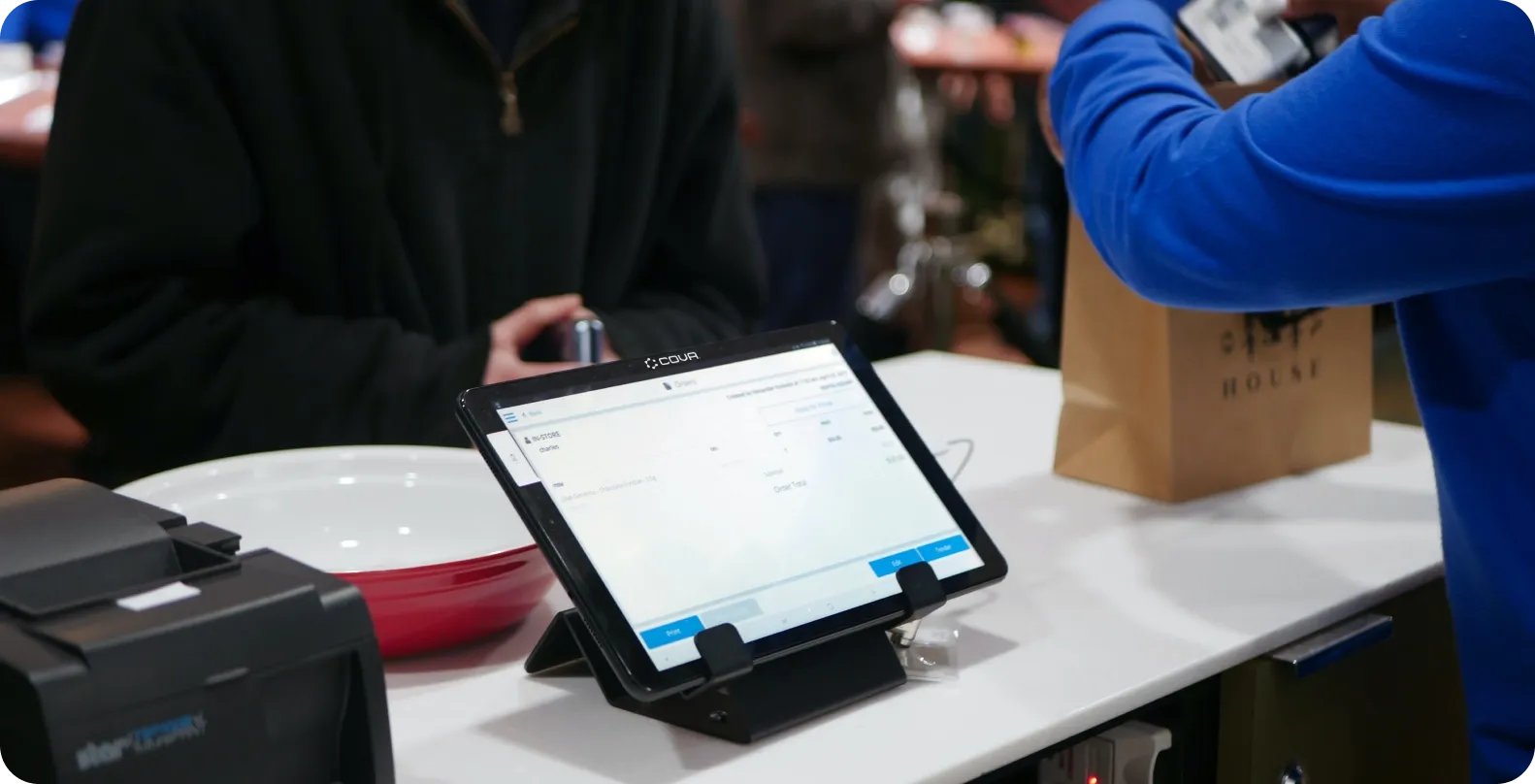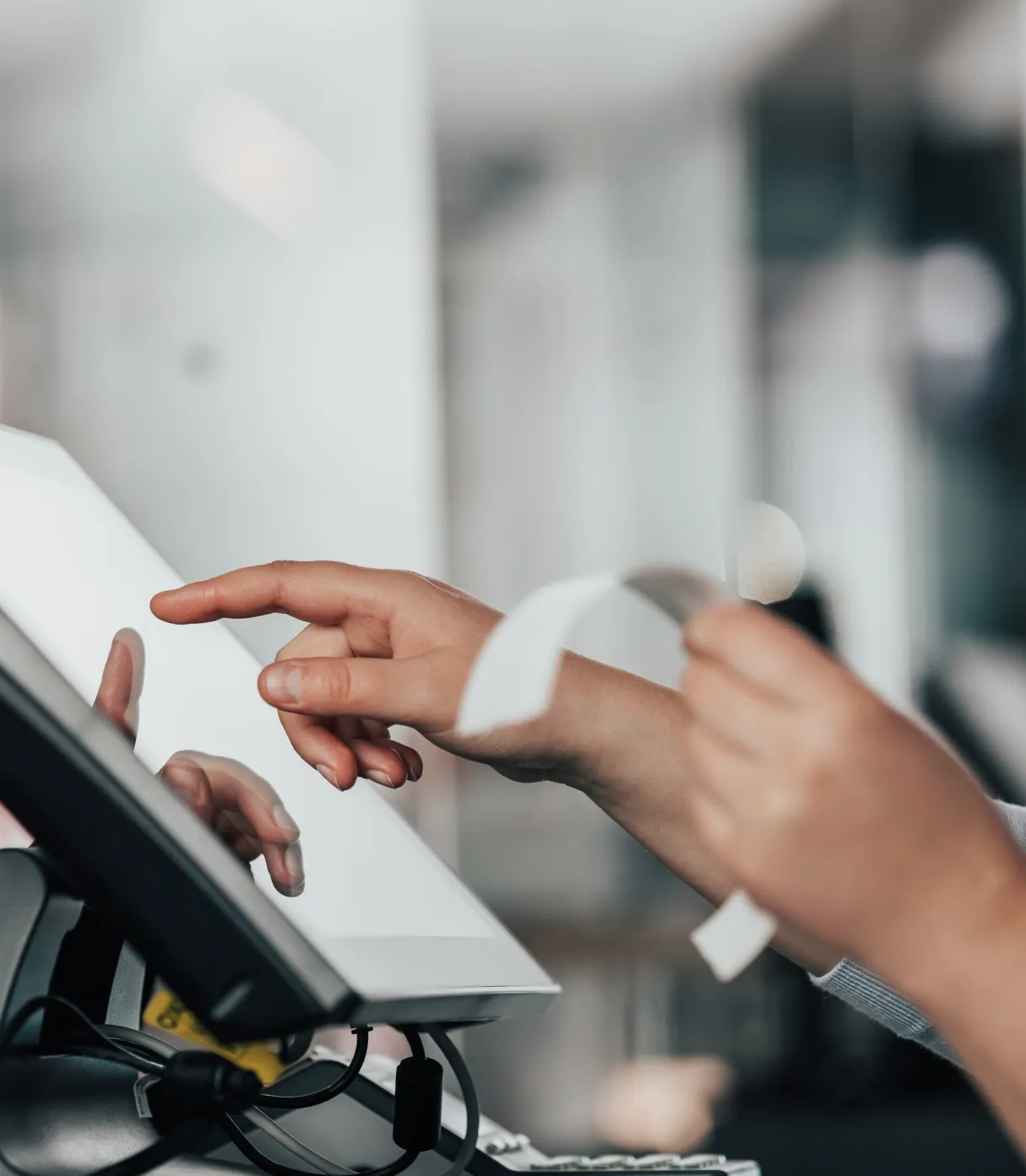
Selling products online can be difficult, especially if you’re trying to run your business without the aid of an e-commerce POS system that processes each payment. If you are currently using an e-commerce platform but do not have access to POS tools, this article will help you get started on integrating your two systems.
Our step-by-step guide will walk you through the whole process, so whether you’re a seasoned veteran or just starting out, these tips will help you take your business to the next level. We’ll explain what a POS system is, which advantages it possesses, and how to choose and integrate it for your business benefit.

What is POS?
The point of sale (POS) refers to software and hardware (meaning devices like cash registers) one can use to manage a retail store. More specifically, integrated point of sale systems refers to software used by a retail store’s sales staff or cashier to record and track sales transactions, both online and offline. Although there are many point-of-sale systems available today, most can be divided into two basic categories: host-based and network-based.
A host-based system is installed on a single computer in your business. In contrast, a network-based system relies on several computers connected over a local area network (LAN). It’s essential to understand how each type works to choose which best fits your business needs.
Host-based POS
Host-based point of sale systems are often preferred for smaller businesses because they don’t require a large investment in equipment or training. However, these solutions aren’t as flexible as their networked counterparts because they can only run on one computer at a time. In addition, if something happens to that computer — if it crashes or breaks down, for example — the entire system goes offline until another device can be found and set up.
Network-based POS
Networked point of sale systems offer more flexibility than host-based options because they rely on multiple devices working together over a LAN. As long as at least one computer is running, all other devices will remain online even if one fails. It makes them ideal for larger operations with multiple locations or departments where different employees might need access to information from different parts of the store simultaneously.
While networked systems have many benefits, they also have some drawbacks. Since each employee must use a separate terminal to enter data about their sales, it may take longer for someone who isn’t familiar with the system to get started than using a host-based solution.
That’s why retail POS integration commonly combines host-based and networked systems features.
Benefits of e-commerce POS integration with your e-commerce site
This section will describe six main benefits that your company will experience when integrating your e-commerce POS system. By implementing the point of sale systems wisely, you’ll get an opportunity to reach them all and bring your business and customers the maximum advantage possible.
Greater reach
The integration of an e-commerce POS system allows you to sell your products in a brick-and-mortar store and on your website without dedicating more resources to both channels. It means that customers will be able to buy from you no matter where they are or what device they’re using, and you’ll have a holistic view of what’s going on with your sales.
Real-time tracking
Avoid double-data entries with automated inventory management. For example, if you notice that one of your items is selling faster than anticipated, you can adjust accordingly — instead of running out of stock or having too much on hand. Also, you’ll be able to see how many items are in each location to reallocate as needed.
Automated management
POS system eliminates the need for manual data inputs. Instead, they’ll be automatically imported into your online store, freeing your hands from entering orders and saving you time and effort.
Cross-channel marketing
Create discounts and promotions and reward customers who shop in your physical location with special offers for their online purchases. POS system provides you with more tools to engage your buyers and introduce greater personalization and customization.
More accurate customer data
Enhance your knowledge of your customers by integrating your e-сommerce site with a point of sale system that collects data on their behavior. It will help you understand what your customers are looking for and how they like to shop. You can then use that information in your marketing efforts and make changes in-store based on it.
For example, suppose you find out that most of your sales come from one particular product category. In that case, you might want to increase its visibility or offer more incentives for purchasing it.
Better customer experience
Customers are more likely to purchase from your e-commerce site if they have a great shopping experience. When you integrate an e-commerce POS system, customers can seamlessly move back and forth between their shopping cart on your website and their physical purchases in-store and choose among multiple payment options to purchase. This seamless transition increases sales opportunities and reduces abandoned carts, leading to higher conversion rates.
Best Solution — Shopify
We highly recommend the POS with e-commerce integration on Shopify because it unites all the above advantages. In particular, you will be able to manage all aspects of your business, including inventory, staff, and pricing, right from a single platform.
It also lets you process sales through Shopify without purchasing a separate hardware terminal. This not only saves you time but money as well.
Shopify POS lets your business work with CRM easier, ensure 24/7 support, and use built-in Shopify payments. Ideally, its features are beneficial for online stores that already operate on Shopify, especially those that have worked on Shopify speed optimization.
However, the POS is effective for all online businesses thanks to its excellent marketing integrations. Alternatively, you can investigate the features of the BigCommerce platform in our recent overview.
Shopify POS features
- Shopify payments: Third-party payment processing is activated automatically.
- Marketing campaigns: Collect customer emails for reengaging and integrate social media for cross-channel campaigns.
- Google Ads: Improve your promotion activities by using Google Ads credit provided.
- CRM: Track customer behavior and their interactions with your store in one place.
Steps to POS e-commerce integration on Shopify and BigCommerce platforms
Generally, there are two main methods for POS integration: XML/SOAP or REST APIs. XML/SOAP is more common among large retailers, while smaller stores tend to go for REST APIs because they are easier to implement.
Here’s how each works:
XML/SOAP: To integrate your e-commerce platform with your POS, you must first ensure both platforms have an XML/SOAP API. If so, all you have to do is link them together using a URL or IP address. Next, ensure your website has an API key and SSL encryption enabled on its server. Finally, enter code into both platforms so they can talk with one another.
REST APIs: With REST APIs, you don’t need to worry about URLs or IP addresses. Instead, all you have to do is add lines of code to your website’s HTML header. As long as both platforms are compatible with REST APIs, connecting them should be relatively simple. Keep in mind that if either party changes servers in any way, it could potentially break communication between them.
Once everything is set up, you’re ready to accept payments online. Your POS will pull up customer information from your website when they pay at checkout. It includes items purchased, the price paid, and tax collected, which is then entered onto a sales receipt. Then, just give them a copy of their receipt.
As you can see, both methods require technical knowledge and an understanding of how the system works. That’s why it’s critical to pick a reliable tech partner who knows all the nuances of integrating a POS system into your e-commerce store.
Here’s the typical process of cooperating with your tech partner:
- Business analysis: The service provider will evaluate your existing POS and website and determine the number of activities needed for implementation.
- Collecting requirements: Once the general direction is set, the team will manage particular requirements for your POS system, including inventory management, customer journey, and hardware limitations.
- Research on integration: At this stage, the tech partner will investigate the technical peculiarities to connect POS and your Shopify or BigCommerce store.
- Setting up: The technical work on building the selected POS system.
- Adjusting product descriptions and images: Tweaking these parameters to the unified standard.
- Optimization: Implementing regular check-ups to ensure everything works smoothly in the long run.
How to choose a POS system?
An e-commerce system is only as good as its ability to integrate with your existing tools. For example, you may have one of today’s top-rated e-commerce websites, but it won’t matter if you can’t manage your inventory in real-time and on a 24/7 basis. Thus, only choosing an e-commerce system with a robust integration platform ensures the smooth operation of your e-commerce site from beginning to end.
Things to consider while evaluating Point of Sale software options:
1. How advanced do you want your e-commerce functionality: If any special features are important to you, ensure they’re supported. These may be gift cards or special integrations with your existing software.
2. Are you looking for a one-stop-shop, or will there be other platforms: In other words, you need to decide how many sales channels you will be supporting. Do you need a full, robust solution that can handle multiple sales channels, or is it okay if it doesn’t support everything? The answer to this question determines the appearance of your POS solution.
3. What’s your budget: Your budget determines the set of functions available. For example, many systems let you sync inventory information and product details, but it’s often a manual process prone to errors. Ideally, you want an integration that automatically updates inventory quantities and pricing when products are added or removed from your website. However, you can choose manual input to save money.
Does POS integration with e-commerce work for your business?
If implemented carefully, a POS system can help a company with brand awareness and increase repeat customers. However, if you’re going to use an e-commerce POS solution regularly, you need a solid plan on how you’re going to be generating sales with it. Unfortunately, that’s the most typical mistake small businesses make, in addition to the lack of capital to develop the success. Thus, integrating these systems will only give your business an advantage if it works for your business.
Main activities for preparation to retail POS integrations:
- Make sure your products are properly represented in digital form before selling them online.
- Know what kind of inventory management software would work best for your business. While there are benefits to selling online, having a solid physical presence is essential in some industries.
- Be realistic about what types of promotions you’ll be able to run online and offline. Not every offer is transferable from brick-and-mortar retail to e-commerce.
- Don’t underestimate the power of multichannel marketing campaigns. Using tools like social media advertising or loyalty programs together with a POS system will bring your business much better results.
If you pay attention to all the preparatory activities mentioned above, you can significantly improve your current operations and increase customer retention rates. An integrated POS system takes over tasks commonly done manually, like processing sales orders and tracking shipping information. Also, it helps make your online store more convenient to your customers, which inevitably results in a greater level of customer satisfaction — and more profits.
Where to get e-commerce POS integration for your store
As an integral element of an omnichannel strategy for businesses, a POS system is a digital solution to process orders and transactions in a unified manner. Being a tool that improves operations and brings customers more convenience while making purchases, point of sales systems are the improvement worth integrating into your online store. However, we recommend paying attention to technical requirements and elaborating a preparation plan so that the integration runs smoothly. In this regard, we at DigitalSuits offer the service of integrating e-commerce POS systems on Shopify and BigCommerce platforms.
Before integrating POS systems, we will check your website works in compliance with major requirements for e-commerce websites built on Shopify and BigCommerce platforms. If needed, we can assist you at this stage too. Also, we will carefully investigate your project requirements so that you get a POS system with the set of features required for your business advantage. This way, we do everything possible to provide you with e-commerce software development services that meet your expectations and work for your benefit.
Contact us to start our conversation about your project!












Was this helpful?
0
No comments yet